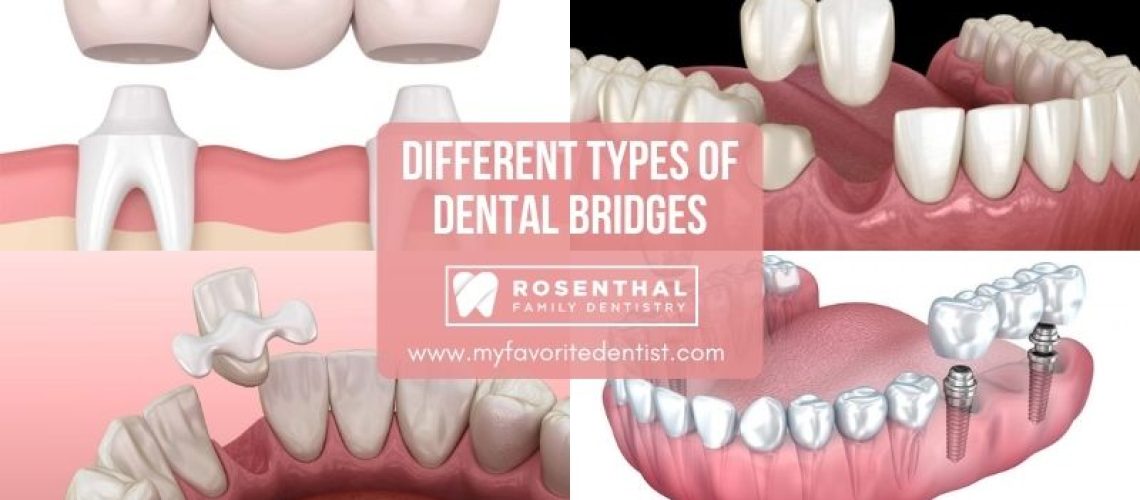Dental bridges have long been a reliable solution for replacing missing teeth, restoring smiles, and improving oral health. They are a popular choice due to their ability to fill gaps created by missing teeth, allowing patients to regain functionality and aesthetics. However, not all dental bridges are created equal, and understanding the different types available can help patients make informed decisions about their oral health. Let us explore the various types of dental bridges and how to find the right solution.
Types of Dental Bridges
1. Traditional Dental Bridges
Traditional dental bridges are a well-established solution for replacing missing teeth. They consist of one or more pontics (artificial teeth) anchored in place by dental crowns cemented onto the adjacent natural teeth, known as abutments. These bridges are ideal when adjacent teeth are healthy and strong enough to support them.
Traditional bridges are versatile and can replace one or multiple missing teeth. They offer good stability and durability, restoring both functionality and aesthetics to the smile. However, they require the alteration of the adjacent teeth to accommodate the crowns, which may weaken them over time.
Despite this, traditional dental bridges remain popular due to their effectiveness, affordability, and relatively simple procedures. Patients considering traditional bridges should consult their dentist to ensure they are the right option for their dental needs and circumstances.
2. Cantilever Bridges

Cantilever bridges are similar to traditional ones but anchored on only one side. They consist of one or more pontics (artificial teeth) supported by a dental crown cemented onto a single adjacent natural tooth, known as the abutment. This type of bridge is suitable when only one adjacent tooth is available for support, making it a conservative option for certain cases.
Cantilever bridges provide a solution for replacing missing teeth without involving multiple adjacent teeth. However, they may not be as stable as traditional bridges, especially in areas of the mouth that undergo significant chewing forces. Patients considering cantilever bridges should discuss their options with their dentist to ensure the most suitable treatment plan.
3. Maryland Bonded Bridges
Maryland bonded bridges, also known as resin-bonded bridges or Maryland bridges, offer a conservative solution for replacing missing teeth, particularly in the front of the mouth. Unlike traditional bridges, Maryland bridges do not require extensive alteration of adjacent teeth. Instead, they consist of a pontic (artificial tooth) held in place by a metal or porcelain framework bonded to the back of the adjacent teeth using a special resin.
This type of bridge is a popular choice for patients concerned about preserving the structure of their natural teeth. Maryland bridges provide a more minimally invasive option than traditional bridges and are often used for replacing front teeth where aesthetics are crucial. However, they may only be suitable for some cases, and patients should consult with their dentist to determine if a Maryland-bonded bridge is the right choice for them.
4. Implant-Supported Bridges
Implant-supported bridges are considered the gold standard for replacing missing teeth. They offer superior stability, functionality, and aesthetics. Unlike traditional bridges, which rely on adjacent teeth for support, implant-supported bridges are anchored by dental implants surgically placed into the jawbone.
The process of getting an implant-supported bridge typically involves two stages. First, the dental implants are surgically inserted into the jawbone, which integrates and bonds with the bone over several months. Once the implants have healed, abutments are attached to them, which serve as anchors for the bridge. Finally, the custom-made bridge, consisting of one or more pontics (artificial teeth), is attached to the abutments, restoring the smile and bite.
Implant-supported bridges offer several advantages over traditional bridges, including better preservation of bone density in the jaw, improved chewing function, and enhanced stability. They also look and feel more natural, providing a long-term solution for missing teeth. While getting implant-supported bridges is more involved and may require a higher initial investment, many patients find the long-term benefits well worth it for their oral health and overall quality of life. Consulting with a dentist experienced in implant dentistry is essential to determining if implant-supported bridges are the right choice for individual dental needs.
Choosing the Right Type

When it comes to choosing the right type of dental bridge, several factors need to be considered:
- Location of the Gap: The location of the missing tooth or teeth plays a significant role in determining the most suitable bridge type. For example, front teeth may be better suited for Maryland bonded bridges for aesthetic reasons, while back teeth may benefit more from traditional or implant-supported bridges for added stability.
- Health of Adjacent Teeth: If the adjacent teeth are healthy and strong, traditional or cantilever bridges may be viable options. However, an implant-supported bridge may be better if the adjacent teeth are weak or compromised, as it does not rely on natural teeth for support.
- Longevity and Durability: While traditional and cantilever bridges are effective, they may need replacement due to wear and tear over time. Implant-supported bridges offer greater longevity and durability, making them a preferred choice for many patients.
- Aesthetic Concerns: For patients concerned about the appearance of their smile, Maryland-bonded bridges or implant-supported bridges may be preferable as they provide a more natural look compared to traditional bridges with visible metal components.
- Budget Considerations: Cost is a significant factor for many patients when choosing a dental bridge. Traditional bridges are typically the most cost-effective option, while implant-supported bridges are more expensive due to the surgical procedures involved.
Wrapping Up
The best way to determine the right dental bridge type is to consult a qualified dentist. During the consultation, the dentist will assess your oral health, discuss your concerns and preferences, and recommend the most suitable option based on your needs.
In conclusion, dental bridges offer an effective solution for replacing missing teeth and restoring smiles. Various types are available, so patients can choose the bridge that best fits their oral health needs, aesthetic preferences, and budget. By understanding the different types of dental bridges and consulting with a dentist, patients can find the right solution to regain their confidence and oral functionality.


